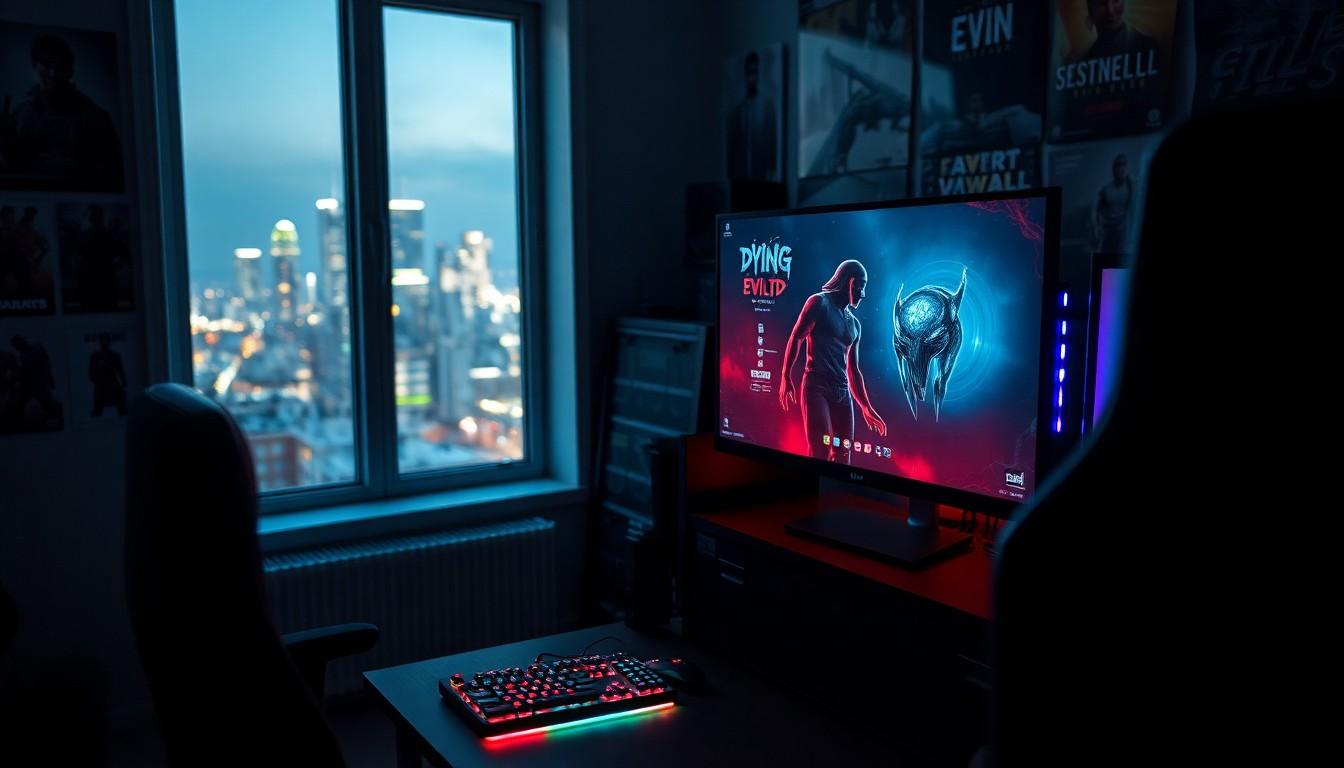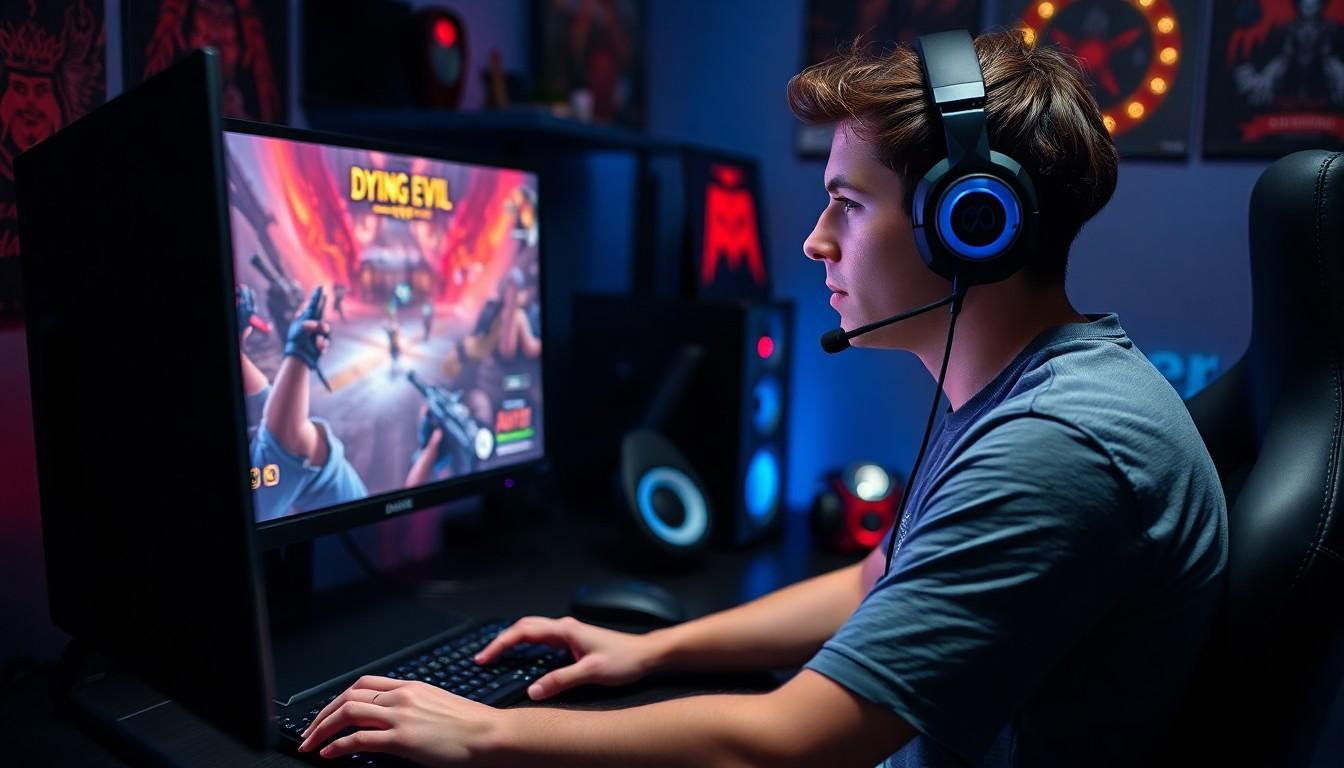For gamers diving into the chaotic world of Dying Evil TD7, nothing’s more frustrating than a choppy experience on PC. Picture this: you’re battling hordes of undead, and suddenly your frame rate drops like a bad pun at a comedy show. It’s enough to make anyone want to toss their keyboard out the window.
Overview of Dying Evil TD7
Dying Evil TD7 engages players with its thrilling gameplay and strategic elements. Frame rate issues frequently plague users while playing on PC. Performance drops occur often, especially during intense battles or when numerous animations are on-screen. Gamers often report noticeable lag that deteriorates their gaming experience. Players experience choppy visuals that disrupt continuity, causing frustration during critical moments.
Developers have acknowledged these performance challenges. Optimizing graphics settings can sometimes provide relief. Lowering the resolution or adjusting detail levels often helps improve frame rates, though this comes at the cost of visual quality. Launching the game on a PC equipped with updated drivers can also mitigate issues. Insufficient hardware specifications relevant to the game’s demands may exacerbate performance problems.
Community members discuss various fixes on forums. Tweaks in specific settings, such as disabling V-Sync or experimenting with frame rate caps, offer potential improvements. Some users report benefits when running the game in windowed mode versus full screen. Understanding the system’s limitations plays a crucial role in achieving smoother gameplay.
Monitoring background applications also contributes to better performance. Closing unnecessary programs running during gameplay can free up resources for Dying Evil TD7. Players value a combination of hardware upgrades, software adjustments, and a keen awareness of game requirements to enhance their overall experience.
Common Performance Issues

Players frequently encounter performance issues in Dying Evil TD7 on PC, leading to frustrating gameplay experiences. Common problems include frame rate drops and input lag that disrupt immersive moments.
Frame Rate Drops
Frame rate drops often occur during intense in-game battles. Players notice lag when multiple animations appear on-screen, significant enough to affect gameplay. Users have reported that lowering the resolution or adjusting detail levels mitigates these drops. Some find that enabling V-Sync results in stuttering rather than fixes. Trying windowed mode or experimenting with frame rate caps can help smooth out the experience as well. Hardware upgrades, like better graphics cards or increased RAM, might also reduce instances of lag. Players consistently recommend monitoring system performance for potential solutions.
Input Lag
Input lag poses another challenge for gamers. Delayed reactions can frustrate players, especially in fast-paced scenarios. Users often notice that running background applications affects input responsiveness. Disabling features like V-Sync or ensuring a direct connection with wired peripherals may enhance reaction times. Game settings that prioritize performance over visuals can also minimize lag. Keeping drivers up to date is essential, as outdated versions may exacerbate the problem. Players frequently share tips in forums to address input lag, highlighting the importance of a well-optimized system.
System Requirements for Optimal Performance
Understanding system requirements enhances the gameplay experience for Dying Evil TD7. Players often notice significant performance improvements by meeting or exceeding these specifications.
Minimum Specifications
Minimum specifications ensure the game runs but may not deliver the best experience. A processor speed of at least Intel Core i3 or AMD equivalent is necessary. Memory requirements include a minimum of 4 GB of RAM. Graphics capabilities must support DirectX 11, along with a dedicated GPU such as NVIDIA GeForce GTX 560 or AMD Radeon HD 6870. Storage space of at least 20 GB is crucial for installation. Networking capabilities require a broadband connection for online play.
Recommended Specifications
Recommended specifications significantly enhance gameplay quality and reduce choppy visuals. An Intel Core i5 or AMD Ryzen 5 processor provides improved performance during intense battles. Memory requirements increase to a minimum of 8 GB of RAM for smooth operation. A dedicated graphics card, like NVIDIA GeForce GTX 970 or AMD Radeon RX 580, ensures better frame rates. Storage increases to 30 GB to accommodate future updates and resources. For optimal online experience, a stable broadband connection remains essential.
Troubleshooting Choppy Gameplay
Choppy gameplay in Dying Evil TD7 can stem from various factors. Understanding these areas helps improve overall performance.
Graphics Settings Adjustments
Adjusting graphics settings can significantly enhance performance. Reducing the resolution immediately minimizes the strain on the system. Altering detail levels also helps, as lower settings require less processing power. Game features like shadows or texture quality may contribute to lag, so disabling them during intense moments could provide smoother gameplay. Testing different configurations allows players to find a balance between visual quality and frame rate. Developers encourage experimentation with settings like V-Sync and frame rate caps to identify the optimal setup for their hardware.
Background Applications
Monitoring background applications is crucial for better performance. Unnecessary programs consume valuable system resources, impacting gameplay quality. Closing applications such as web browsers and file transfer services frees up memory and CPU power. Players can utilize task managers to identify and end resource-heavy processes effectively. Running Dying Evil TD7 with minimal background activity can lead to reduced input lag and increased responsiveness. Prioritizing gaming activity over other tasks ensures an uninterrupted gaming experience, especially during high-stress scenarios.
Community Feedback and Solutions
Community feedback reveals that many players experience choppy gameplay in Dying Evil TD7 on PC. Gamers often report frame rate drops during intense action, leading to frustrations. Solutions shared include optimizing graphics settings by lowering the resolution and adjusting detail levels, which can improve performance.
Players actively discuss potential fixes on forums. Disabling V-Sync has helped some users achieve smoother gameplay. Experimenting with frame rate caps can also yield better results for specific systems. Running the game in windowed mode is another workaround noted by multiple players.
Maintaining updated graphics drivers contributes to overall performance. Outdated drivers often worsen input lag and frame rate issues. This simple update can make a noticeable difference in gameplay quality.
Individuals find that background applications significantly impact game performance. Closing unnecessary programs frees up resources, enhancing responsiveness. Overall system health affects gaming experience, prompting players to keep their devices optimized.
Different types of peripherals can also influence performance. Using wired controllers or mice reduces input lag compared to wireless alternatives. Prioritizing gaming settings in the control panel can lead to improved performance across the board.
Meeting the minimum system requirements is crucial for an enjoyable experience. Players often discuss the importance of having at least an Intel Core i3 processor and a dedicated GPU. Following community recommendations can help in troubleshooting and alleviating performance problems.
Conclusion
Choppy performance in Dying Evil TD7 on PC can significantly impact the gaming experience. By understanding the underlying causes such as frame rate drops and input lag players can take proactive steps to enhance their gameplay. Adjusting graphics settings and keeping drivers updated are essential for smoother performance.
Community insights also play a vital role in troubleshooting these issues. Experimenting with different configurations and closing unnecessary background applications can yield noticeable improvements. Ultimately achieving a balance between visual quality and performance is key to enjoying the thrilling gameplay Dying Evil TD7 offers.

